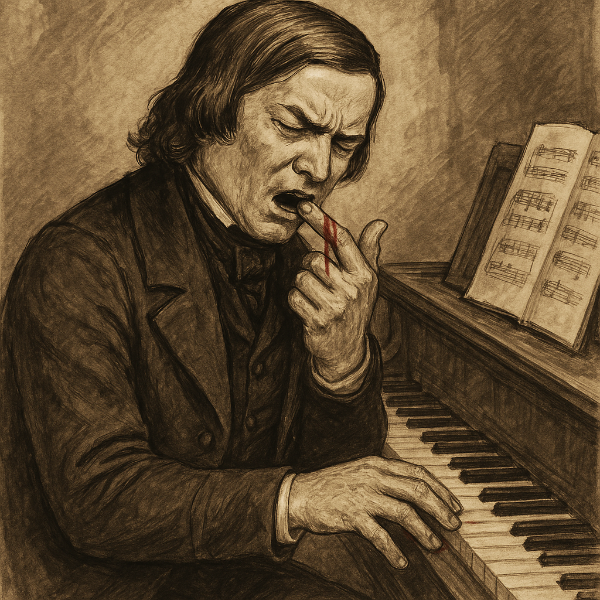Argentinian composer José Antonio Bottiroli (1920–1990) started his career with works influenced by folk music of his country before going more international and following a more Romantic style. His piano music frequently has an improvisational character while his orchestral works are more in the style of Liszt’s symphonic poems.

José Antonio Bottiroli (Copyright Bottiroli Family Estate)
It is in his piano music, however, that we see him venture beyond simple romanticism and into more impressionistic style.
His series called 5 Microfilms, from 1978, doesn’t refer to those films of newspaper you find in libraries but rather are music for micro-films. In pieces with durations from 19 seconds up to a minute, Bottiroli summons up small worlds that you can animate in your imagination.
No. 1 sets a scene that’s slow and melancholic: a sunset? A parting? Second thoughts?
José Antonio Bottiroli: 5 Microfilms, B58 – Microfilm No. 1 in C major (Fabio Banegas, piano)
No. 2 seems to be a chase scene starting from its classic opening. Our invisible hero seems to escape his unseen foe, however.
José Antonio Bottiroli: 5 Microfilms, B58 – Microfilm No. 2 in D minor (Fabio Banegas, piano)
No. 3 is full of unresolved passion, with promises made and hopes lifted.
José Antonio Bottiroli: 5 Microfilms, B58 – Microfilm No. 3 in E minor (Fabio Banegas, piano)
No. 4 is worried pacing, back and forth, the mind racing and the body held to limited action. Arms are thrown about, but situation doesn’t seem to come to an effective resolution, despite the addition of a clever idea at the end.
José Antonio Bottiroli: 5 Microfilms, B58 – Microfilm No. 4 in F minor (Fabio Banegas, piano)
We close with a clever scene – could this be Charlie Chaplin setting up his dance of dinner rolls or eating his spaghetti shoelaces (both in The Gold Rush)?
José Antonio Bottiroli: 5 Microfilms, B58 – Microfilm No. 5 in A major (Fabio Banegas, piano)
What film could you create to these micro-scenarios? Here’s the music!
For more of the best in classical music, sign up for our E-Newsletter



